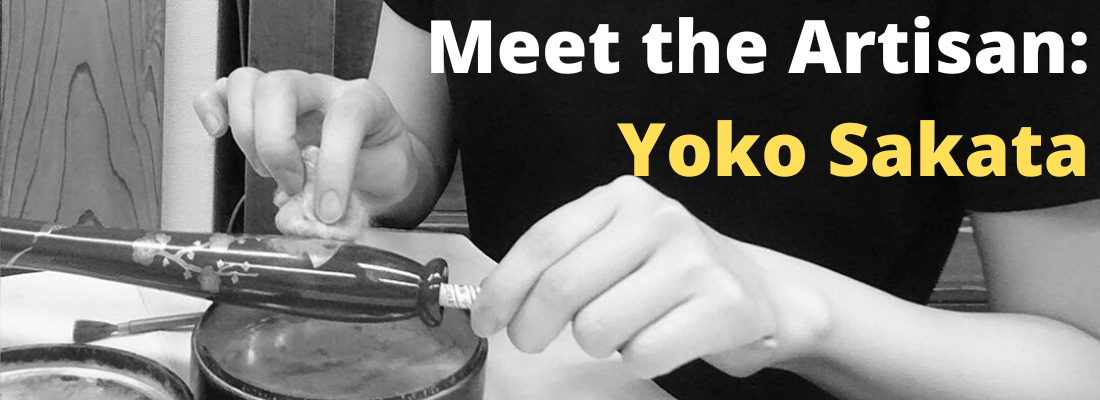We had the opportunity to interview maki-e artisan Yoko Sakata. She’s a brilliant young artisan with a lot of talent. Yoko-san painted the ShiZen Two Swimming Turtles pen, and we hope to see many more creations from her.
Maki-e refers to urushi pieces on which designs are created with metallic powder, usually gold or silver. It’s an incredibly painstaking and beautiful art form that requires many years of practice. You can see the golden maki-e work on the turtle’s shell below:

We’re happy to have this opportunity to talk with a maki-e artisan. The following is translated from Japanese.
UrushiPen: Tell us a bit about yourself. Where are you from?
Yoko Sakata: I was born in Sendai, Miyagi Prefecture in 1985. I lived in the Tōhoku region from the time I was born until I was about 20 years old.

UP: What led you to decide to become a maki-e artisan?
YS: Ever since I was a child, I have been interested in traditional Japanese culture. I became familiar with folk songs and Japanese tea ceremony. When I was a junior high school student, I wanted to work in Japanese traditional culture. Maki-e is delicate and beautiful, and there are some tricks that surprise the viewer. Currently, the origin of lacquering crafts in the world is considered to be the Jōmon period in Japan. I also feel the romance that things made of lacquer will last for nearly 10,000 years. Since I was a kid, my hands were dexterous, so I felt that it suits my characteristics.
UP: Who was the master that taught you maki-e? When did you learn maki-e?
YS: I went to Kyoto, studied maki-e practical skills at a vocational school in 2007-2009, and went to graduate school in 2009-2011. From 2011 to 2020, I became a disciple of Yutaro Shimode, one of Japan's leading maki-e artists and a graduate school professor. Mr. Shimode completed various tasks such as making lacquer products for His Majesty the Emperor and his wife, making gifts for state guests, and restoring maki-e and cultural properties at the most prestigious shrine, Ise Grand Shrine. I worked at this lacquer workshop for nine years.

UP: Has there been any exhibitions that you've submitted work in? If so, which ones?
YS: In June 2022, I won a prize in an open call exhibition sponsored by the Japan Kōgei Association, the largest traditional craft organization in Japan backed up by the Imperial Household Agency. I received the "QAB Ryukyu Asahi Broadcasting Award" at the 56th Japanese Traditional Crafts (Western Region) Exhibition. There’s an annual craftsmanship competition for making Buddhist altars and butsugu, held in Kyoto Prefecture. We win the award almost every year.
UP: What other objects do you paint maki-e on? For example, tea ceremony items, katana, etc.
YS: Sometimes I draw maki-e work on tea ceremony utensils. The sword scabbard is sometimes requested to be repaired. The one I was most involved with so far was "Buddhist Maki-e". Japanese culture is closely related to Buddhism, and especially in Kyoto, there are many temples, so lacquer is often used for ceremonial tools and Buddha decorations. Sometimes I draw the world of Sukhavati and the figure of Buddha with maki-e work.

UP: What inspires your maki-e art?
YS: I am often moved by small creatures from nature, like plants and insects. I’m also inspired by Buddhist thought, nature worship, and Kyoto's nature in particular.
UP: Have you earned any recognitions or titles in maki-e?
YS: June 2022 was the first time I received an award at a large exhibition involving the Japan Kōgei Association. The Governor of Kyoto also awarded me the title of “Kyo-mono Certified Craftsman,” which is given to skilled craftspeople under the age of 40. That was in 2016.

